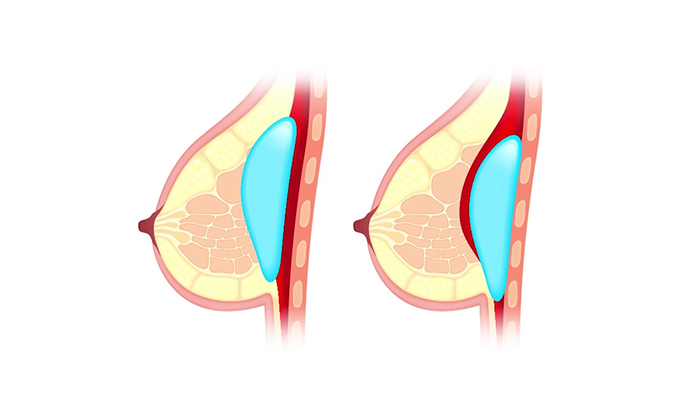Breast augmentation surgery may still be the most popular aesthetic surgical procedure in the world, but that doesn’t mean that there’s not a lot of false information out there. Board certified plastic surgeon Dr. Mark D. Epstein of Stony Brook, NY loves nothing more than debunking the urban legends, because he understands just how vital it is that anyone considering a breast augmentation be properly educated in terms of what to expect. It’s as important for patient satisfaction as an exemplary aesthetic result.
Just because you read something online, don’t assume that it’s true; research is a must. Below, Dr. Epstein walks us through the four urban legend questions that he hears most often.
# 1 – Breast Implants Last Longer than 10 Years
There are a lot of urban legends when it comes to breast augmentation surgery. Dr. Epstein’s favorite is the one that says that a patient must change her implants every ten years. This is quite simply not true. In many ways, plastic surgeons themselves are guilty of starting this rumor, “but this urban legend has taken off,” says Dr. Epstein. And today, no matter how hard surgeons try to debunk the myth, this legend has circled the globe, refusing to die.
Back in the early days of saline implants, the 10 year rule was valid. When examining the newest batch of silicone gel breast implants, it’s just not the case anymore. The latest study done in 2011 by the FDA showed that at the 10 year mark, 90% of silicone gel breast implants were still intact. And that was two generations behind the silicone gel breasts implants of 2018.
This doesn’t mean that patients will not have to replace their implants, will not have to undergo revision surgery, or won’t want to downsize. What it does mean is the implants themselves are good to go for much, much longer than 10 years. If a patient and expert surgeon work together deeply to pick the right devices, size, and surgical options, that patient will have great results for 10 years and beyond.
Silicone Implant Technology Has Improved
Silicone implant technology continues to improve. The shells are “dramatically stronger than they were in the past,” explains Dr. Epstein. Furthermore, the new gel fill results in “less fold fatigue where the implant is constantly flexing and extending in the breast pocket.” The less movement the shell has then the less chance there is of a rupture.
“No implant’s going to last forever, but today’s implants are going to last a lot longer than the implants we had in the past,” explains Epstein. His answer to patients who come in wanting to know whether or not it’s time to replace their implants is that if they are doing well and are still happy with how the results look, then leave things alone.
That said, it is important to have your implants checked every few years. The FDA recommends that a patient get an MRI at three years after surgery and then every two years thereafter.
Dr. Epstein finds this to be overkill. However, an ultrasound is inexpensive so he recommends that his patients get one every few years, along with a mammogram. Though most ruptures are silent and therefore require some form of imaging to detect, patients may experience a bit of discomfort or a change in how their breast feels or looks. This is a cue to the surgeon to order an ultrasound which is really “the first line test,” shares Epstein.
#2 – Yes on Breast Feeding
Another question that Dr. Epstein gets asked all the time is whether or not a patient will still be able to breast feed after a breast augmentation. The answer is absolutely! Woman who have been frustrated by a lack of volume in their breasts typically want to do something about it as soon as possible, often in their early 20’s. It can be frightening to think about making a change to your body that may have long term consequences, such as feeding your future children.
Thankfully, a breast implant will not get in the way of the ducts from the glands to the breast to the nipple. However, keep in mind that pregnancy and breast feeding may have an adverse affect on the skin and tissues of the breast, stretching them out.This, in turn, may cause your implant to move around. It’s one of the main reasons why women seek breast implant revision surgery.
#3 – Implant Placement Will Not Affect Breast Volume
The third urban legend that Dr. Epstein hears most often is that a patient’s breast size will be different depending on whether it is placed above or below the muscle. This is not true. A patient’s breast volume post surgery will be the sum total of her native breast tissue and the breast implant. There may be contour differences between above and below muscle placement, but the overall breast volume will remain the same.
#4 – Do Implants Raise the Nipple?
The last urban legend has to do with whether or not the placement of a breast implant will raise the patient’s nipple. If one looks at the nipple versus the crease beneath the breast, then the answer is yes. The nipple will appear higher in respect to the inframammary fold or crease post-operatively. However, the breast crease drops somewhat during surgery.
When Dr. Epstein investigated this urban legend using 3-D technology, he analyzed the position of the nipple relative to the body rather than the crease. He found that for women with very small, tight breasts, the nipple only changed about 1-2 millimeters, an inconsequential amount. And for women with lax breasts, the nipple sometimes went up as much as a centimeter. Bottom line in terms of nipple position, it really depends on the size of your native breast tissue.
All of these issues are discussed when a consultation occurs with a board certified plastic surgeon with expertise in breast surgery. For Dr. Epstein and the experts, nailing down everything in the consultation is how patients receive the best, most individualized results for them.




















Facebook
Twitter
Instagram
YouTube
RSS